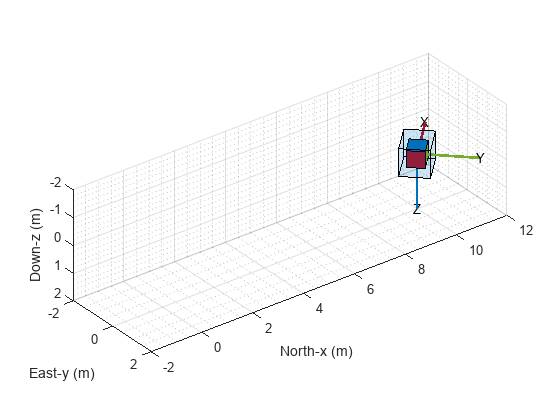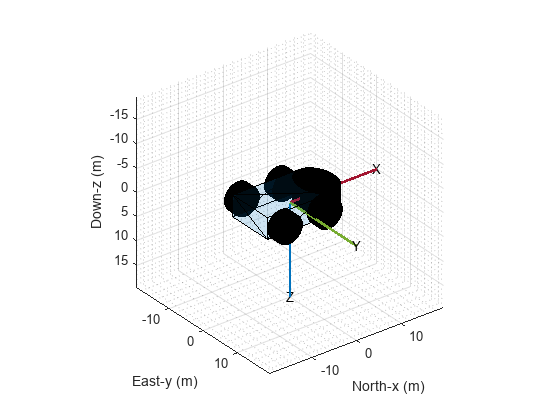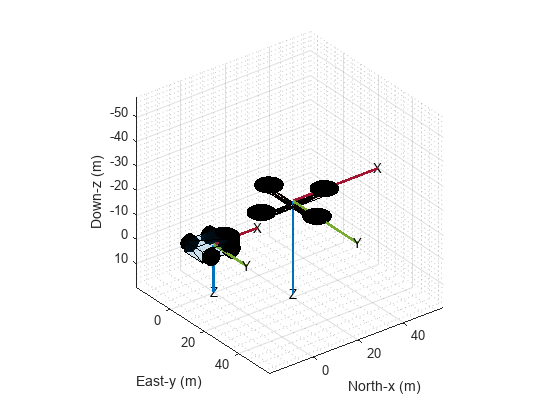poseplot
構文
説明
poseplot 関数は、指定された 3 次元姿勢 (位置と向き) をパッチの原点に xyz 座標系があるパッチとしてプロットします。
poseplot は、姿勢を座標の原点位置にゼロ回転でプロットします。既定のナビゲーション座標系は北-東-下 (NED) 座標系です。
poseplot( は、指定された向きの姿勢をプロットします。既定では、位置は orientation)[0 0 0] です。
poseplot(___, は、姿勢プロットのナビゲーション座標系を指定します。 frame)
poseplot(___, は、1 つ以上の名前と値の引数を使用して pose patch プロパティを指定します。たとえば、Name=Value)poseplot(PatchFaceColor="r") は、赤の面の色で姿勢をプロットします。プロパティのリストについては、PosePatch Properties を参照してください。
poseplot( は、姿勢プロットの親座標軸を指定します。ax,___)
p = poseplot(___)PosePatch オブジェクトを返します。pose patch を作成した後でそのプロパティを変更する場合は p を使用します。プロパティのリストについては、PosePatch Properties を参照してください。
例
入力引数
名前と値の引数
出力引数
バージョン履歴
R2021b で導入















